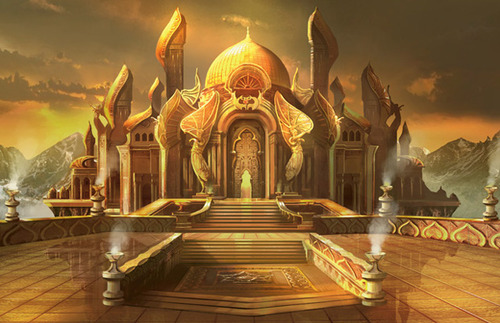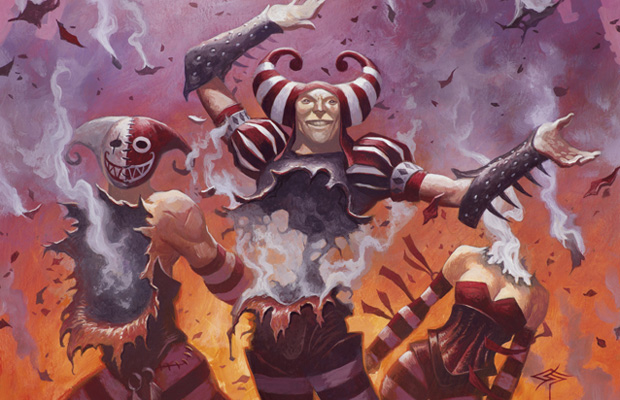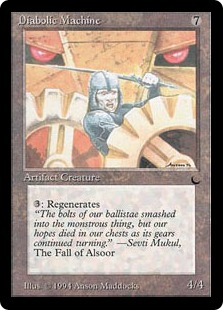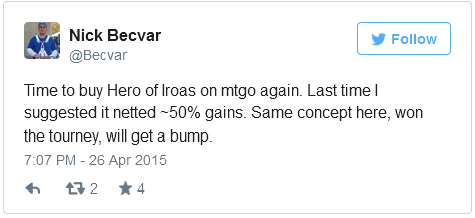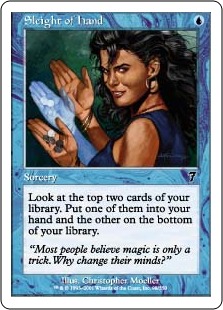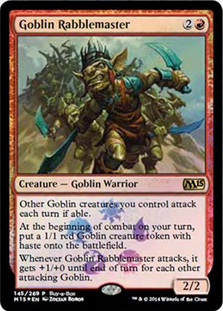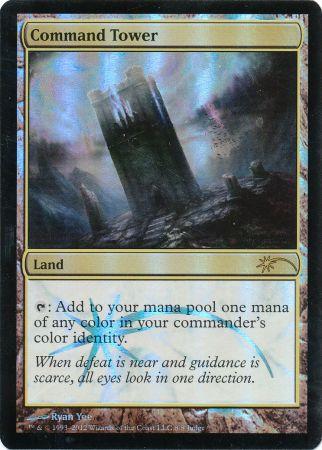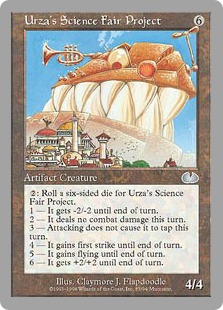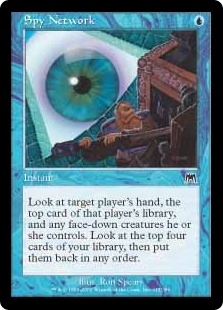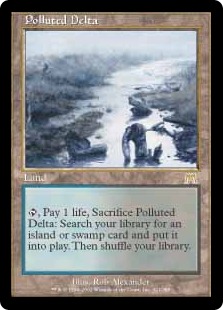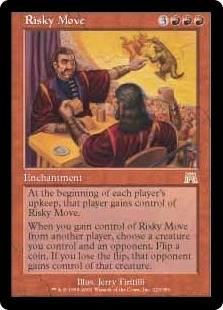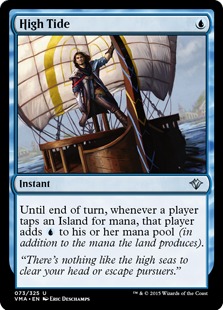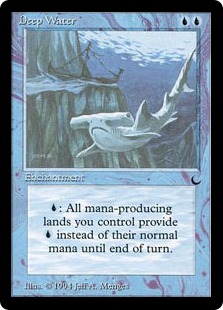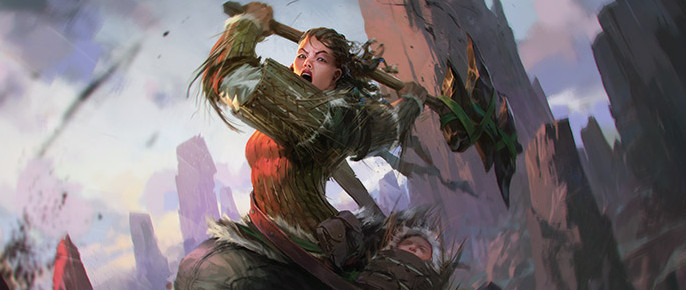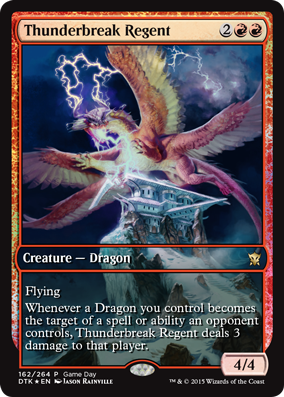By: Derek Madlem
Last week I might have come across a little hard on the #mtgfinance. Judging by the feedback I received, the zeitgeist was right there with me for most of what I said … and I received A LOT of feedback, more than any article I’ve ever written.
People associate a lot of bad things with #mtgfinance, even the use of the #mtgfinance hashtag has become a punchline to most people. Though to be fair, what hashtag has anyone ever taken seriously? #thanksObama
So now with everyone who tweets about the price of cards being evil we can all just agree that anyone that considers themselves a Magic financier is probably a terrible person right? After all, they’re out there just ripping off orphans, sharking trades from naive single mothers, and stealing Black Lotuses from the elderly using elaborate e-mail scams right?
The Retail Level
In the distant past there was a time when no Standard legal card was ever worth more than $20, it just didn’t happen. When you opened a pack of 4th Edition the best you could hope for was a Shivan Dragon because it was the most valuable card in the set at $20, with Royal Assassin right behind it at $18. Meanwhile, there were no “dollar rares” … even Chaoslace was $3, just go ahead and give that one a read.
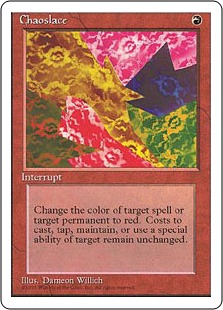 Cards were hard to find, there were no internet stores…hell, there wasn’t really even an internet. It was years later when I convinced my mom to order a box of Tempest from an online store … she had to FAX HER CREDIT CARD INFO … things have come a long way since then.
Cards were hard to find, there were no internet stores…hell, there wasn’t really even an internet. It was years later when I convinced my mom to order a box of Tempest from an online store … she had to FAX HER CREDIT CARD INFO … things have come a long way since then.
When people began to approach selling cards as a business rather than a hobby, things revolutionized. Most cards got cheaper. As more and more people entered the fray, competition and innovation increased. The Chaoslaces of the world became what they should be – bulk. But some cards crept up in price. I missed the middle years of Magic, I was absent for everything that occurred from Invasion through Time Spiral block, but you know what I saw when I came back to the game?
Cryptic Command – $20
Bitterblossom – $20
Ajani Goldmane – $20
The best rares still didn’t seem to break through that $20 ceiling. But then we were introduced to Mythic Rares and everything was ruined. I mean seriously, it’s a Magic card … who would pay more than $20 for a stupid piece of cardboard?
As it turns out, a lot of people. Around this time there were a lot of people quitting because Magic was “getting too expensive.” At the same time the game was experiencing a Groundswell of new players.
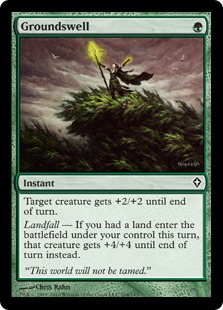 Did these players come out of the woodwork because they were secretly waiting for a more expensive game to play? Obviously not. I’m going to put this next part in bold letters because it’s really important.
Did these players come out of the woodwork because they were secretly waiting for a more expensive game to play? Obviously not. I’m going to put this next part in bold letters because it’s really important.
Tying up more of a set’s aggregate value in a few cards made running a game store easier.
Game stores are popping up everywhere and one of the main drivers of their success is selling Magic singles. Higher prices on popular cards creates opportunity for entrepreneurs. Think about this for a second: most stores made more profit selling a playset of Goblin Rabblemasters than they did selling a box of M15 … this is the reality of running a modern game store.
You know what provides you with all those tables at your local game store? I’ll give you a hint, it’s not the dollar rares or booster pack sales; it’s Baneslayer Angel and Bonfire of the Damned and Jace, the Mind Sculptor. It’s players like you buying cards like these that are creating a place for you and your friends a place to meet up and battle with Magic cards.
Supply and Supply
In my last article I drummed up the artificial creation of demand for certain cards. You know what else the Magic finance community does for you? They create supply as well. Whaaaaaaaat?
The “scrappers” of the finance community are out there aggressively digging through 5,000 count boxes pulling out the gems you need and they’re selling them by the fist full to online retailers, vendors at events, and local game stores. These people keep prices down by keeping the supply flowing into the hands of people that need the cards. With cards as mundane as Gitaxian Probe already hovering around $3, you can imagine what the price would be if the supply were cut in half.
It’s not just about picking bulk, these guys are combing the local game stores that lack an online presence and buying up staples and putting them back into circulation so that you can find them. They’re out there flipping through the binders and boxes of the most casual of players to pluck out these diamonds in the rough.
 They’re going into places like this to find cards, so you don’t have to. Those binder grinders are providing inventory for local game stores and online retailers alike to sell. You have to keep in mind that when a store runs out of Goblin Rabblemasters they can’t just order more from the distributor, they have to buy them second hand.
They’re going into places like this to find cards, so you don’t have to. Those binder grinders are providing inventory for local game stores and online retailers alike to sell. You have to keep in mind that when a store runs out of Goblin Rabblemasters they can’t just order more from the distributor, they have to buy them second hand.
News Team Assemble!
“You heard it here first, the #mtgfinance crowd is not all bad … full story at 11”
One of the biggest benefits the #mtgfinance community has brought to the people is a dissemination of information. As more and more people provide regular content about the financial workings of the Magic economy, the average reader becomes more educated. While it sucks for the old-school sharks that made a fortune trading with the blissfully ignorant, the bulk of the Magic population is better served by being well-informed.
A genre that may have begun as articles about value trading has evolved into much much more. We have writers bringing over real-world finance lessons and explaining complicated concepts in simple terms. We have weekly reports on what we’re buying and selling to promote transparency.
We’ve got writers “attacking the format” from a variety of different angles – casual, Standard, Modern, eternal formats, Commander, Tiny Leaders, and the list goes on and on. I know that I sure don’t care to learn the worldwide metagame for EDH, I play against the same four or five people…but if I read what others are saying about popular EDH cards, then I have a more informed perspective.
All of these content creators are providing current and trending news on the cards you want and the cards you own. They’re boiling down complex concepts and interactions into 140 characters. They’re publishing 2,000 word manifestos on the inner workings of Tiny Leaders. They’re putting in the work analyzing and interpreting trends so you can focus your free time on what makes Magic so magical – playing the game.
As the volume of finance content created increases, the public becomes more informed and we have fewer people throwing away hundreds of dollars on sure-to-fail preorders. As the general public becomes more informed buyers we’ll see a decrease in those outrageous preorder prices and we’ll more quickly discover the cards that have real motivators for demand.
Most importantly we’ll hear less of that guy at our local game store making bold predictions on mundane cards because his audience will be informed enough to shut him up.
Technology
https://www.youtube.com/watch?v=w9ERiI1epI4
I agree, I love technology. You know what drives technology and innovation? Money. Take a look at all of the sweet offerings you have at your fingertips because of this whole #mtgfinance thing. Sites like MTGPrice and QuietSpeculation have cobbled together an assortment of tools to make your lives easier.
Buylist automation and collection tracking are just the tip of the iceberg as far as features we have at our disposal for under a few bucks a month.
We have portable access to pricing through apps and there are numerous “fair trade” apps that will make sure that you don’t leave a single penny on the trade table. All of this technology was created because of the #mtgfinance community. You may not think yourself a financier, but if you’ve ever looked up the price of a card then you’re a part of the community as a whole.
Maybe Not So Bad
Magic finance isn’t all about called shots, buyouts, and spec targets, it’s about understanding the underlying principles. We can read articles to find out the “why” instead of just looking up the “what” of a price.
We have access to a variety of resources that all popped up around this little community. Historic pricing data aggregated from dozens of sources? Yeah, we’ve got access to that. Daily gain / loss reports in our e-mail inbox? Yeah, we’ve got access to that. How many of you remember the old days when you had to log into starcitygames.com the night before you went to FNM to look up the prices of all your cards so that you were on point at the trade tables? Now we’ve got access to up to the minute pricing on our phones from a variety of sources.
We’re living in a world with no $3 Chaoslaces, and I have a hard time saying that’s a bad thing. The next time you hear someone mention MTG finance, remember the good things this community does for all of us regardless of our level of participation.
Until next time, you can find me on twitter @GoingMadlem or you can find me at GP Atlantic City working at the Aether Games booth, stop by and say hello.
